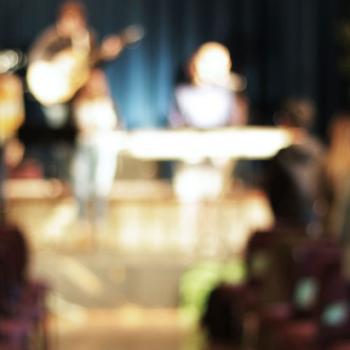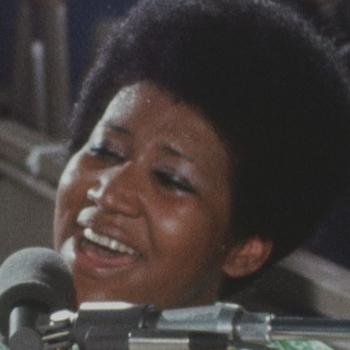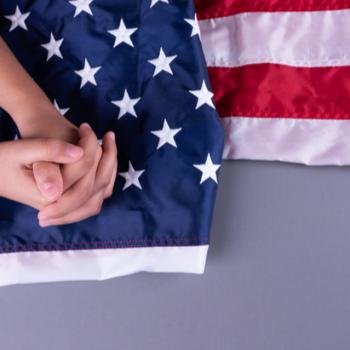
If you were a youth group kid in the 1990s, chances are you wore a WWJD bracelet. These small bits of apparel were everywhere, available for less than a buck at Bible bookstores and corner gas stations. They were part visible reminder for righteous living, part advertisement for Christianity.
I haven’t seen anyone wear a WWJD bracelet in well over a decade. Mine has long been replaced by a Fitbit. While I don’t know it ever amounted to anything more than a trend, part of me appreciates the bands and even misses seeing them. But as we continue to protect ourselves and others against a virus that looks to be endemic, I wonder if there’s a more powerful, tangible way for Christ’s followers to spread the same message.
What would Jesus do?
The phrase “What would Jesus do” has been a prompt for Christians for centuries. It was used in a sermon by Charles Spurgeon back in 1891. It was a cornerstone question for many characters in Charles Sheldon’s novel In His Steps just a few years later. The book is so identified with the WWJD movement that it was eventually updated by Sheldon’s great-grandson a century later, using the question as its title.
After reading the book in the late 1980s, a youth leader at a Michigan church challenged her teens to wear bracelets bearing the acronym for a month. Others, seeing dollar signs, rushed to market the bracelets and a fad was born. Soon, anyone who wanted a visible symbol of their faith was wearing multicolored bracelets, shirts and necklaces bearing the abbreviation. The phrase became so commonplace that it was easily modified, appropriated and used as satire.
This simple question in a novel became a challenge for the church that quickly turned into a slogan. But did it have any power?
The pros and cons of WWJD
As I said earlier, I’ve always had a soft spot for the WWJD bracelets. I’m sure we’ll get into this in a future post, but I was the type of kid who jumped at the chance to broadcast my faith. I had a Lord’s Gym shirt. I blasted dc Talk albums in my car, windows down, when I drove to school. If there was an opportunity to advertise my faith, I took it. And WWJD bracelets were a cheap, easy and nonthreatening way to do that.
However, was that the original intent? After all, the characters in Sheldon’s book were challenged not to wear a shirt with WWJD, but to ask themselves the question before they committed any actions. The Michigan youth group kids were encouraged to use the bracelets as a prompt for much of the same reason. That’s a worthy intention. Christians are called to be Christ’s disciples, and a tangible reminder to ask ourselves what our savior would do can be a helpful tool.
But Christianity as a fad can often lose the heart of its original intent. In my experiences, at least, I saw WWJD bracelets used not so much as a tool for prayer but as a billboard for Jesus. It signified you were part of the club. While I’m sure some people used them to help guide their thoughts and actions, simply wearing a bracelet didn’t require any action or commitment. You could use it as a tool, or you could just wear it as the latest cool thing.
WWJD in a pandemic
I’ve been thinking about WWJD bracelets a lot lately, particularly as the pandemic rages on. As the delta variant spreads and businesses and churches consider reinstating mask mandates or vaccine requirements, the first leap many people make is to their rights. They’re quick to say they won’t be forced to take a vaccine or wear a mask if they don’t want to.
But freedom in Christ is not freedom for ourselves; it’s always freedom to serve and love others. It’s why Christ’s command was not just “love the Lord your God” but to “love your neighbor as yourself.” And Paul’s command for us to have the mind of Christ is not one rooted in our own power, but in using our humility as an opportunity to serve others. To follow Christ’s example — to understand and act upon “What Would Jesus Do” — is to put our rights and comforts aside in service of others.
Over the last year and a half, masks have been a tangible opportunity to do that. We wear masks to protect ourselves from getting sick, but also to protect others from viruses we might be carrying. We get vaccines not only because they protect us but because they can also contribute to the ending of the pandemic. Masks may not have WWJD written on them (although they can), but they’re very much a model of putting this question into action. Our responses to this time should be rooted in loving and protecting others. That’s what Jesus would do.












